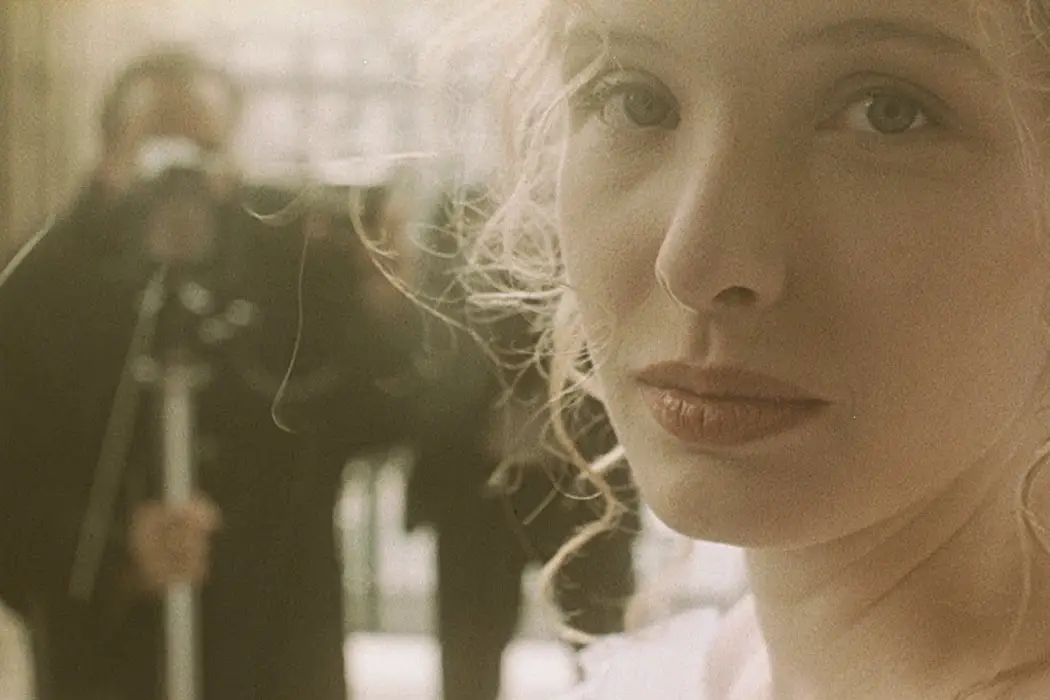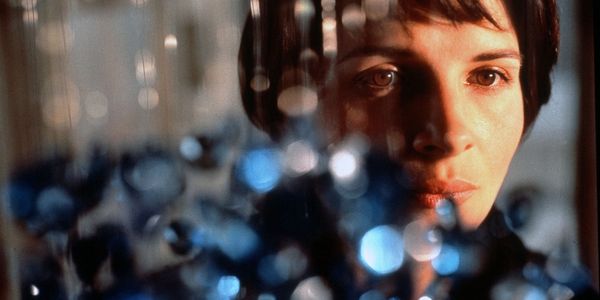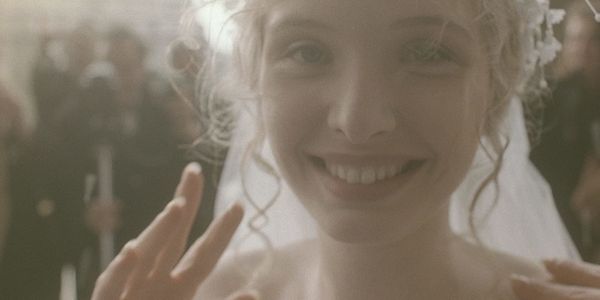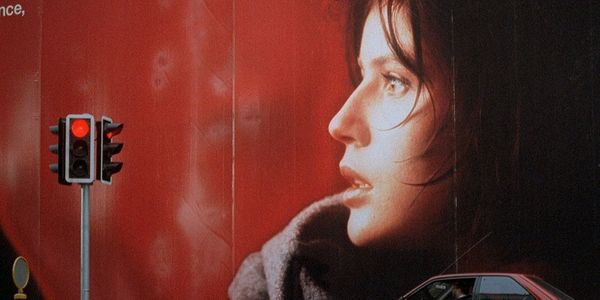THREE COLORS: BLUE, WHITE & RED: A Triumvirate Triumph

Soham Gadre is a writer/filmmaker in the Washington D.C. area.…
Along with Michelangelo Antonioni, a filmmaker whose movies I have recently dedicated myself to watching in chronological order, Krzysztof Kiéslowski is another well-respected and canonical European auteur whose work completely went over my head the first time I attempted to dive into his repertoire. I respect the people who can watch these filmmakers at a young age and really ‘get it’. That didn’t happen to me. Blue, the first part of Kiéslowski’s spiritual trilogy of films dealing with the three pillars of French democracy, was a movie I could barely get through in college. I had vague recollections going back now of blue filters, Juliette Binoche looking depressed the entire time, but no recollection of plot, feeling, or emotion. But it all came rushing this time, nearly a decade after my first attempt.
Blue (1993)
Kiéslowski’s Blue sets the stage, and in my opinion, the aesthetic standard for the artistic achievement of this trilogy. It has very unique subjective editing choices that make profound the nature of Julie’s (Juliette Binoche) tragedy, which explodes on the screen in the first minute of the film. This opening sequence is such a colossal stage-setter – the hypnotic blue filter, its hushed dialogue, and the foggy and disorienting camerawork all create an entrancing and sinister draw-in for the film that then comes to a literal and figurative screeching halt and crash resulting in the death of Julie’s famous composer husband and her daughter. It’s a sequence that sticks on purpose and enhances the subjectiveness with which Kieslowski aims to paint this trilogy.

Julie’s confused and insatiable depression is palpable through her relation to objects of memory. There’s a blue crystal chandelier, large white sheets of paper with her husband’s (really hers) unfinished compositions scribbled, and a necklace with a cross on it. In addition to the loss, the burden of having been the ghostwriter of her husband’s music, and the press attention his death with possibly bring to uncover all of the secrets weighs heavily on Julie as well. The metaphorical sequences of her in the pool, where she submerges herself in blue, are asides of self-contemplation that recapitulates the perspective we are seeing the movie from. Sequences of the music crescendoing and the screen going black but then fading back into Julie create a resonant depiction of the overwhelming nature of Julie’s life. The most poignant of these moments is when she snaps at a young man who witnessed the car crash. The screen fades out and in and she continues to say sorry.
An astounding element of Blue is its keenly sympathetic portrayal of women attempting to live a life that society pushes back against. Julie’s attempts to cultivate a life of isolation and solitude is consistently railed against by people trying to sensationalize her family’s tragedy and capitalize on the compositions she wrote for her husband. Julie finds a sense of camaraderie in a young dancer/sex worker named Lydia who lives in her apartment building and is being shoved out by other residents because of her occupation. The blue in the French flag stands for ‘liberté’. It’s the freedom to choose the life you want to live, to take the turns you want to take, and to take control and agency over what happens to you. Blue is the most complete picture in the trilogy in terms of both its metaphorical pronouncements and the visual aesthetic that Kieslowski defines them with.
White (1994)
While Blue and Red both take more sympathetic and optimistic ideas of their central tenets (‘fraternité’ and ‘liberté’) in White, Kiéslowski’s decides to depict ‘egalité’ in its most sinister interpretation. The weakest of Kiéslowski’s trilogy, White is still nonetheless amusing in its own right. It’s a cynical and sarcastic film that doesn’t quite mesh into a convincing portrait of any of its characters. It starts with a divorce trial between Karol (Zbigniew Zamachowski), a Polish immigrant to France, and his French wife Dominique (Julie Delpy). Dominique makes a declaration that she doesn’t love Karol anymore, which devastates him, however later on she does show sexual attraction to him still. Karol ends up going back to Poland illegally in a suitcase even though his passport was destroyed. There, he rekindles with some family, friends, and a mysterious man who wants Karol to stage a murder for him.

Karol is a classic bumbling oaf of a protagonist but throughout the movie, he starts to turn out to be much more resourceful and intelligent than he seems. What Kiéslowski manages to build in the first half is a dark comedy akin to early Aki Kaurismaki, a sort of gender-swapped version of Match Factory Girl. But as Karol gains business acumen he starts to seek revenge on his wife in the most devastating way possible. This is where the movie falters into becoming strangely cruel and preposterous. It reads in its staging more like a misogynistic fantasy than it does a fun revenge tale. It draws such a stark contrast into its denouement, especially in Dominique’s demise that one has to wonder what ‘egalite’ really means to Kieslowski. Does he consider it a dark truth? A total lie? Does he think that it’s a theoretical philosophical idea that sounds good to say and put on paper but in practice ruins people and creates monsters?
The film is also the most visually muted – perhaps by choice. One major exception is the scene where Karol and Dominique have sex for the last time and the screen fades into a blistering white as the ecstasy of orgasm takes over both of them. The greys in the film paint a picture of Poland that is anti-Paris – construction, cloudy skies, broken buildings, and a generally unscrupulous population that doesn’t put on airs or formalities in the way that the French do. Perhaps then, the ‘egalite’ that Kieslowski is referencing is the hypocrisy of Western Europe in the face of their Eastern counterparts, a unified continent that isn’t so unified in its cultural and political dichotomies.
Red (1994)
Red comes as a perfect bookend to Kiéslowski’s trilogy. A movie that understands its role as the final chapter of a compelling and monumental artistic undertaking and it uses every moment to leave a lasting impression that rivals Blue in being Kieslowski’s ultimate masterpiece – a true swansong as Kieslowski died just a year after its release. Red is energetic, both visually and audibly, creating a strong impression on both accounts with bold orchestral music and editing and camerawork that moves in unexpected directions in relation to its characters, again depicting the subjectivity of Kieslowski’s approach. One of the most inspired sequences is when the central character Valentine (Iréne Jacob) and her judge friend Joseph Kern (Jean-Louis Trintignant) talk after Maria’s modeling showcase. He tells her the story of his love life and as he points, the camera tracks in the direction of his finger from the ceiling to the floor.

Red is the most symbolic of the three films as well, it is rich in the narrative connection and details between characters that attempt to tie all the narrative threads of the trilogy together. It’s not a ‘puzzle movie’ nor is it an attempt at all to create a smart commentary about its philosophies… instead, the film uses coincidence and visual and audial symbols to build relationships between people. The idea of ‘fraternité’ is relayed as both material and spiritual connections between characters. It also considers chance – chance encounters, survival vs. death, and déjà vu. Kern tells Valentine after she’s devastated that he would listen in on people’s private phone conversations that it doesn’t matter. He says sooner or later, people’s secrets will reveal themselves and they will either build stronger relationships or destroy people.
Conclusion
Kiéslowski brings all the major characters of his trilogy together on a boat at the end which crashes and his characters end up being the only survivors. The final shot as well, of Valentine making the exact same expression as her modeling advertisement, keeps in line with the themes of coincidence and chance, but also a belief that theoretical or made-up ideas end up manifesting in real life. The photographer tells Valentine during her modeling shoot to make a worried face, she tries to approximate one, but it manifests itself naturally at the end. In turn, the three pillars of French democracy and philosophical pillars of society, in general, must be formed naturally to be genuine.
Have you seen the trilogy? What do you think? Let us know in the comments below!
Does content like this matter to you?
Become a Member and support film journalism. Unlock access to all of Film Inquiry`s great articles. Join a community of like-minded readers who are passionate about cinema - get access to our private members Network, give back to independent filmmakers, and more.
Soham Gadre is a writer/filmmaker in the Washington D.C. area. He has written for Hyperallergic, MUBI Notebook, Popula, Vague Visages, and Bustle among others. He also works full-time for an environmental non-profit and is a screener for the Environmental Film Festival. Outside of film, he is a Chicago Bulls fan and frequenter of gastropubs.













